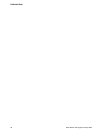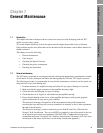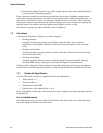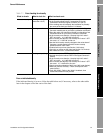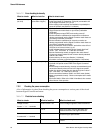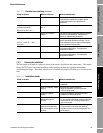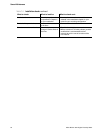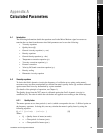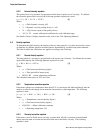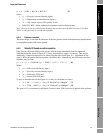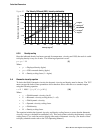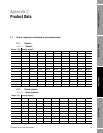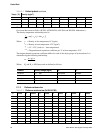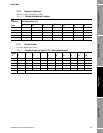56 Micro Motion 7827 Digital Viscosity Meter
Calculated Parameters
A.2.2 General viscosity equation
The quality factor of a resonator is proportional to the inverse square root of viscosity. To calibrate
the resonator against fluid viscosity, the following quadratic expression is used:
η = V * ( V0 + V1.*X + V2*X
2
) [2]
Where:
• η = Fluid dynamic viscosity (cP)
• V = Dynamic viscosity scaling factor (1 = cP)
•X= 1/Q
2
(inverse square of the quality factor)
• V0, V1, V2 = meter calibration coefficients for each calibrated range
(For details of how to display alternative units, refer to the 795x Operating Manual.)
A.3 Density equations
To determine the fluid's density, the smaller of the two time periods (τ
B
) is taken and used in a series
of equations to calibrate against actual fluid density determined by a transfer and prime standards.
The order in which the calculations are applied according to the following.
A.3.1 General density equation
The time period of a resonator is proportional to the square root of density. To calibrate the resonator
against fluid density, the following quadratic expression is used:
ρ
u
= K0 + K1*τ
B
+ K2*τ
B
2
[3]
Where:
• ρ
u
= Fluid uncorrected density (kg/m
3
)
• τ
B
= Time period B of meter (µsec)
• K0, K1, K2 = meter calibration coefficients
The calibration takes place at 20°C and 1 bar.
A.3.2 Temperature correction equation
If the meter operates at a temperature other than 20°C, a correction to the indicated density must be
made to account for the change in tine material characteristics with temperature. The following
equation is used:
ρ
t
= ρ
u
* [ 1 + K18 * ( t - 20 ) ] + K19 * ( t - 20 ) [4]
Where:
• ρ
t
= Temperature-corrected density (kg/m
3
)
• ρ = Fluid uncorrected density (kg/m
3
)
•K18, K19= Meter calibration constants
• t = Operating temperature (°C)
A.3.3 Viscosity correction equation
If the meter is used in fluids whose viscosity is greater than 100 cP, a correction to the indicated
density must be made to account for the offset seen due to the fluid's viscosity. The following
equation is used:



